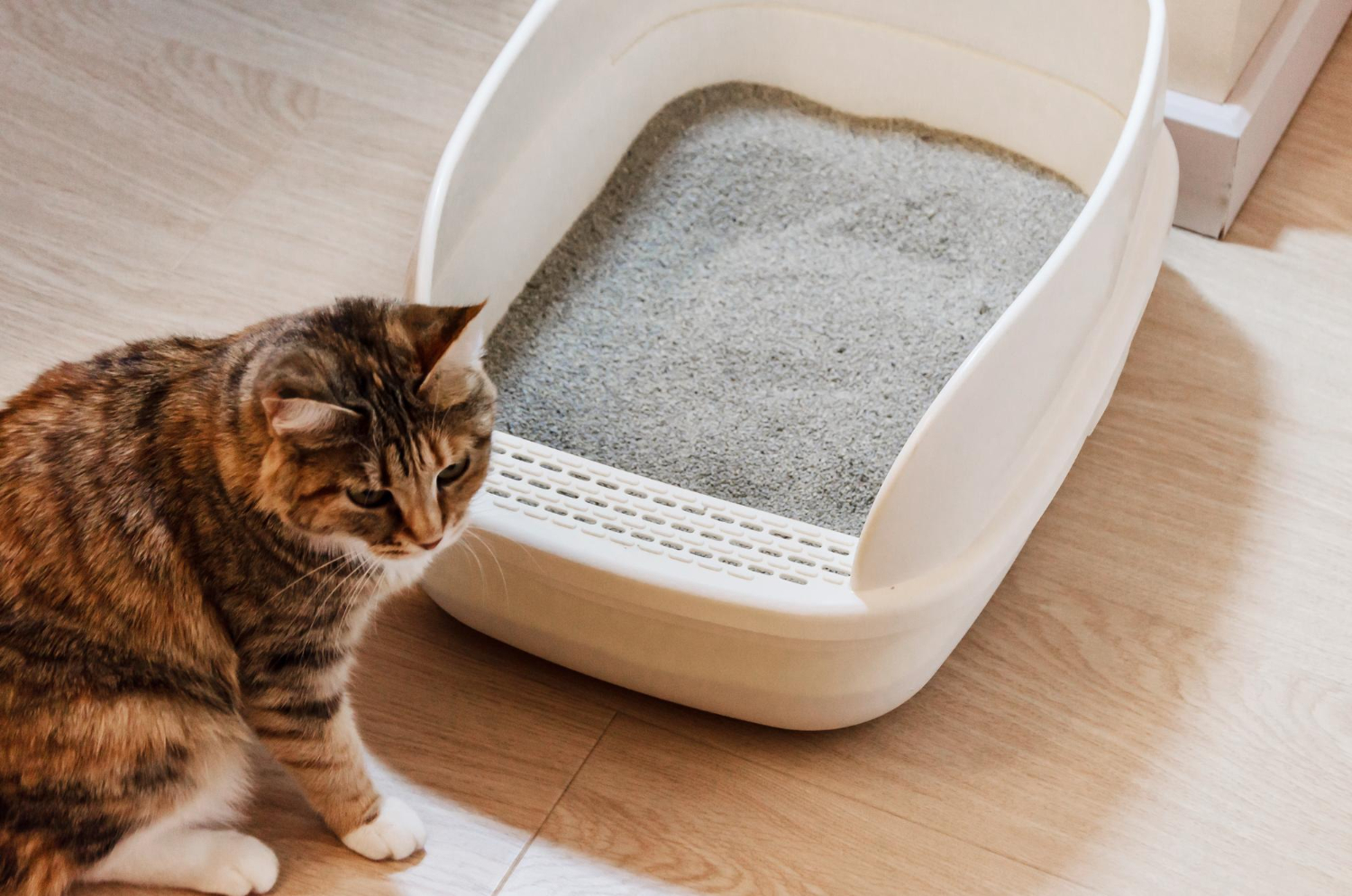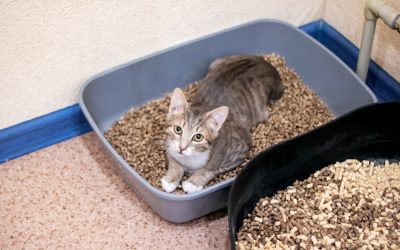Why Is My Cat Going to The Bathroom Outside the Litter Box?

Cats are famously clean creatures. They groom themselves obsessively and usually take to the litter box with ease. So when your cat suddenly starts going to the bathroom outside the box, it’s natural to feel confused and maybe even a little frustrated.
Understanding what’s going on with your cat is the first step toward restoring peace (and cleanliness!) in your home. This guide walks you through the most common reasons why cats avoid the litter box, along with some simple, practical steps to help get things back on track.
Why Your Cat Might Be Avoiding the Litter Box
There’s no single reason cats stop using their litter box, but here are some of the usual suspects:
1. They’re Not a Fan of the Litter Box Setup
Cats can be particular. The type of litter, the smell, the location, or even how often the box is cleaned—any of these factors can make or break it for your cat. Some cats want privacy, while others prefer easy access. It’s all about figuring out their preferences.
2. Something in Their World Has Changed
Cats thrive on routine. A move, a new pet, or even rearranging the furniture can throw them off. Change can feel threatening or unsettling, leading them to act out or mark their territory in places they shouldn’t.
3. They’re Stressed or Anxious
Stress is a big deal for cats, and they often express it through their bathroom habits. Loud noises, unfamiliar visitors, or tension with other pets can all push your cat to find a new, less stressful place to go.

Could It Be a Health Issue?
Absolutely. Before assuming it’s behavioral, it’s important to rule out medical causes. Cats sometimes associate pain or discomfort with the litter box, and that can cause them to avoid it altogether.
Common Medical Triggers:
- Urinary Tract Infections (UTIs) can cause pain while urinating.
- Digestive Issues: Diarrhea, constipation, or anything causing discomfort can make the litter box seem like the enemy.
- Mobility Problems: If your cat has arthritis or trouble getting into the box, especially one with high sides, they may go elsewhere.
Jamie Case, DVM stated in the PetMD article:
- “Arthritis: Mobility issues such as arthritis may make it difficult for cats to get into a litter box. It may also make the squatting position uncomfortable. Arthritis in the feet, especially in declawed cats, may cause discomfort when stepping on certain textures, like cat litter.
- Diabetes or kidney disease: Certain medical conditions like diabetes and kidney disease can lead to increased urination, which may cause cats to feel the box is too dirty or not appropriate for use.”
Let’s Talk About the Environment
The right environment makes a big difference. Think of the litter box like a bathroom; you want it to be clean, easily accessible, and private.
Quick Tips:
- Location Matters: Quiet, low-traffic areas are ideal. Avoid placing the box next to noisy appliances or near food bowls.
- Keep It Clean: Scoop the box daily and clean it thoroughly weekly. Cats won’t use a dirty box.
- Offer Options: The general rule is one box per cat, plus one extra. Spread them around to give your cat choices.
How to Prevent Your Cat From Pooping Outside Their Litter Box
Veterinarian Jamie Case, DVM, said in the PetMD article:
You can prevent house soiling issues with your cat by keeping a few tips in mind:
- “Have the right number of litter boxes—How many litter boxes do you need? The general rule is to have one litter box for each cat in the home plus one additional box. If you have one cat, you should have two litter boxes. If you have three cats, provide four litter boxes.
- Spread the litter boxes throughout the house—Don’t put the litter boxes directly next to each other. Instead, spread them throughout your home—at least one on each floor—so no cat can block access to all the litter boxes at once.
- Keep litter boxes in quiet, low-traffic areas—Just like people, cats prefer peace and privacy when doing their business. While the laundry room may seem like a good place for a litter box, some cats won’t appreciate the noise of the washer and dryer.”
- Separate Mealtime from Bathroom Time – Cats naturally avoid eating near the areas where they eliminate. If your cat’s food and water bowls are positioned close to the litter box, they might feel uncomfortable or even cease using the box altogether. Consider placing their dining area in a different part of your home, ideally in a quiet, low-traffic spot where they can eat and drink without disturbance.
- Choose a Litter They’ll Actually Like. The type of litter you choose is more important than you may realize. Most cats prefer unscented litter that clumps well and has a fine to medium texture. Once you find one that works for your cat, try to stick with it. Cats are creatures of habit, and even a slight change—like a new scent or texture—can be unsettling. If you need to switch, do it gradually by mixing the new litter with the old over several days.
- Keep the Box Fresh and Clean. A clean litter box isn’t just a preference; it’s a necessity. Scoop the box at least once a day to remove waste and make it part of your routine. About every two weeks, take the time to fully empty the box and wash it with a gentle, unscented, enzyme-based cleanser. Ensure it’s completely dry before adding fresh litter. This helps keep odors down and reduces the risk of bacteria, making the experience more pleasant for both you and your cat.
Can Odie Pet Insurance Provide Coverage for Such an Investment?
Depending on the specific policy, pet insurance can cover the diagnosis, treatment, and management of diseases in cats.
Reimbursement
This method is the most common for pet insurance companies. You pay out of pocket for the veterinarian bill, and then the insurance company reimburses you for what’s covered under the insurance plan. The steps look like this.
- You pay the vet bill after your cat’s visit.
- You fill out the pet insurance claim form.
- Submit the claim form and other required documentation to the insurer.
- After the claim is approved, you will be reimbursed for eligible expenses.
Odie’s Illness and Injury pet health insurance plan offers comprehensive coverage for your cat.
What Does Odie Pet Insurance Cover?
Pet insurance covers various veterinary expenses, providing financial protection and peace of mind for pet owners. Here are the details of the coverage options offered by Odie Pet Insurance:
Illness & Injury Plan
The Illness & Injury Plan is an all-inclusive insurance plan designed to cover a wide range of medical needs for your pet. This plan includes comprehensive coverage for various illnesses, injuries, and veterinary services. Some of the covered items include:
- Veterinary exams and consultations
- Diagnostics (e.g., X-rays, lab tests)
- Prescribed medications
- Surgeries and hospitalization
- Rehabilitation, acupuncture, or chiropractic treatments
- Medically necessary supplies
- Euthanasia and cremation
The Wellness Plan
The Wellness Plan is a monthly membership that focuses on preventive care and covers routine veterinary services.
- Provides reimbursements for routine care items such as wellness visits (exams and vaccines), testing and parasite prevention, dental cleanings and at-home dental care, vitamins, supplements, and more.
- Through Odie’s partnership with Petivity, a leader in smart pet products and proactive care, Wellness Plan members can also receive reimbursements for Petivity devices and health kits, as well as eligible Purina food and supplements.
- Total reimbursement up to $700 per year.



